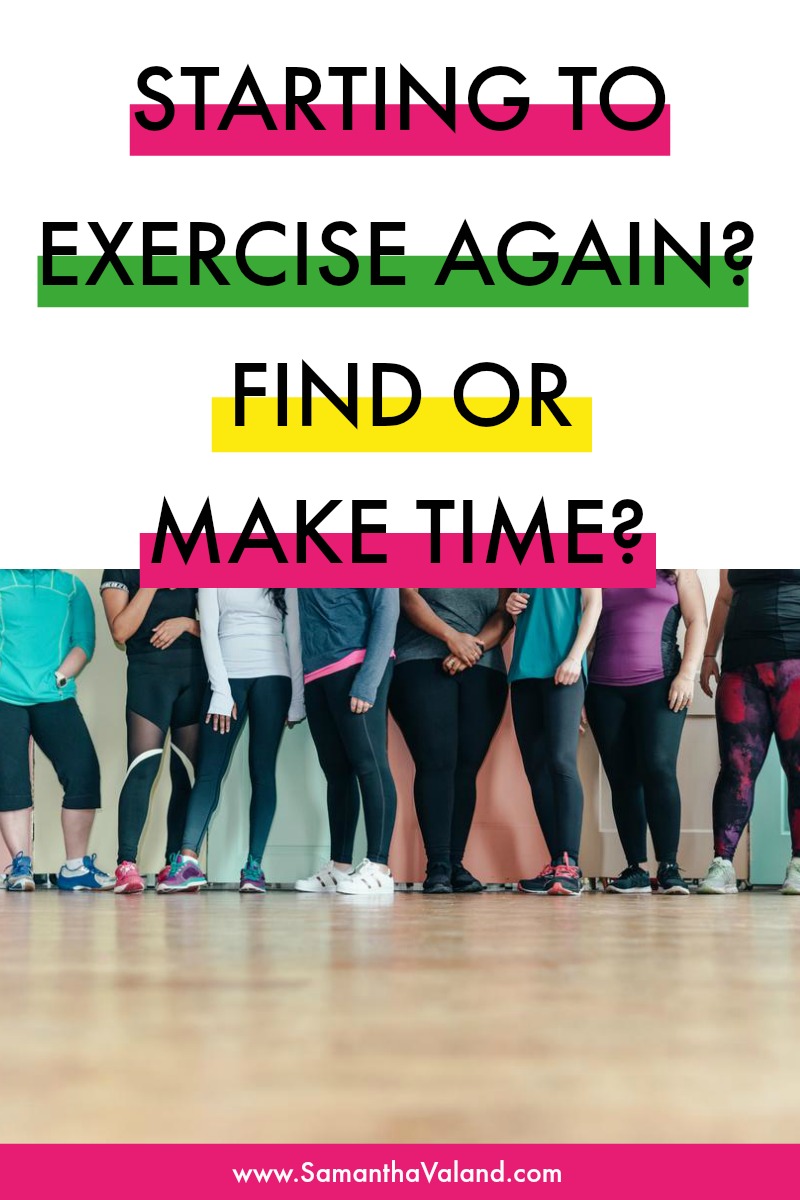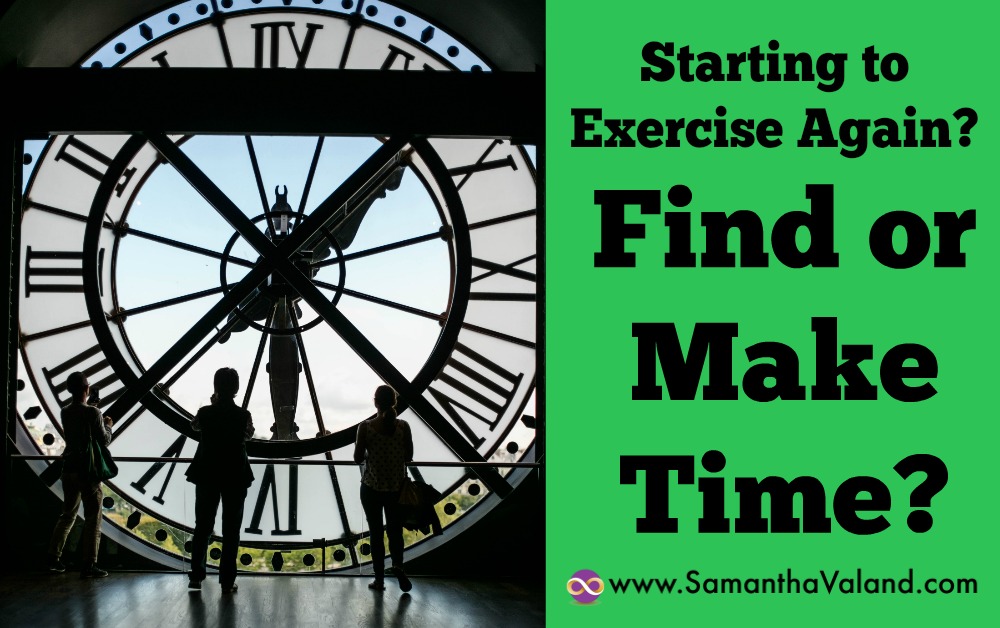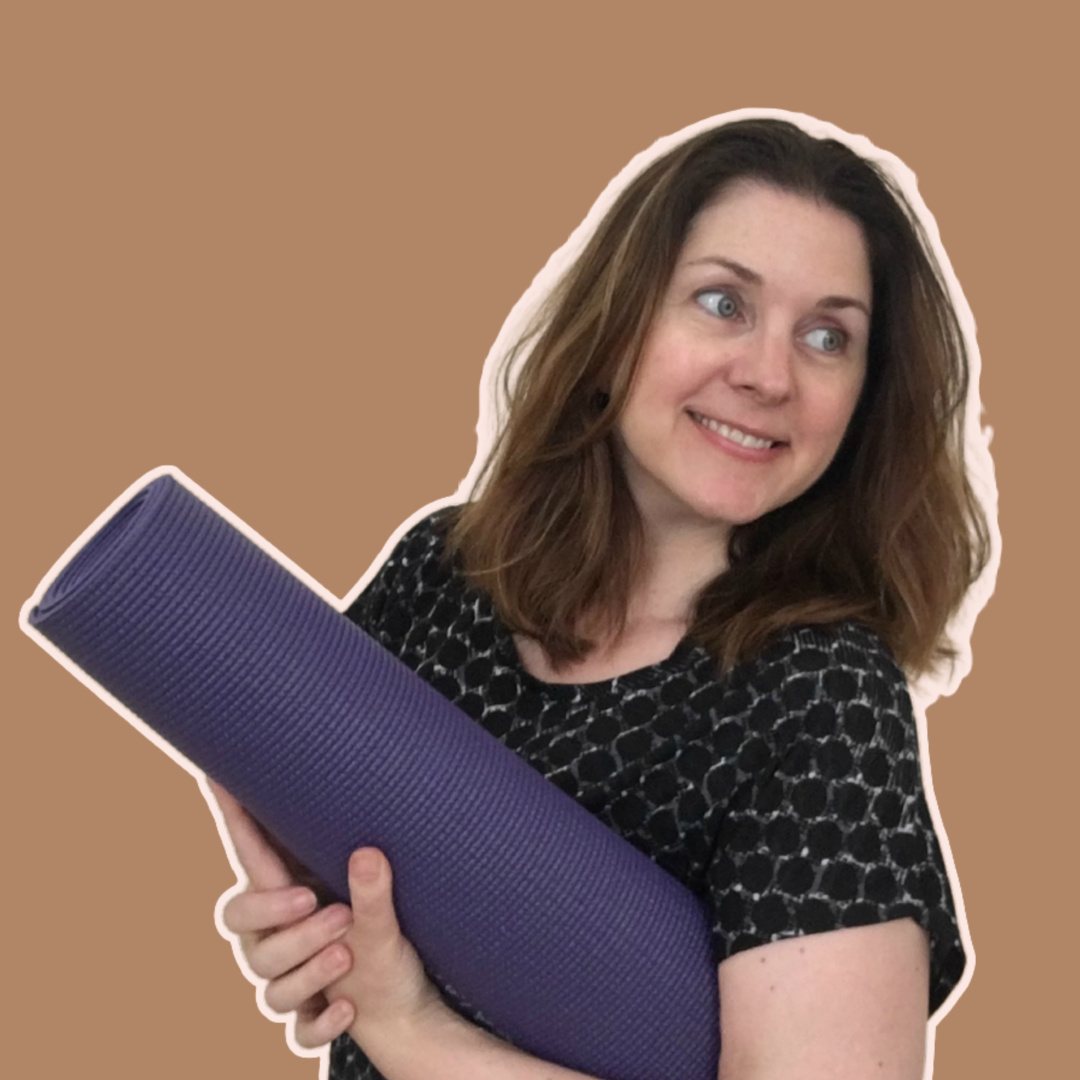Starting to exercise again is not just about how you are going to exercise. It is also about finding the time and creating an exercise habit.
I think there are two approaches to exercising, it’s either flexibility or fixed. Finding or Making Time Neither is better than the other, it comes down to what suits you best.
Making Exercise Appointments
Making is simply when you have an appointment. This can be for a class or perhaps a Personal Training Session but there is an action to book in with someone that is external. A class booking system or with your trainer. You have to make the time for a fixed session.
The benefits of this approach is that is creates an habit much easier, and there is less mental chatter in your head about it. If you were asked if you were free on Tuesday @ 6pm, the answer would always be ‘no that’s my Pilates class’. It’s much easier to protect your time and someone will notice if you don’t show up!
Usually you will have paid for the fixed approach in advance and many of us that is a motivation as well. To get your money’s worth.
In your menopausal years this is a great approach as we can become ‘moody’ exercisers and only want to exercise when we feel like it. This can be due to tiredness if you are not sleeping well with night sweats or waking up at 4am. Some of the menopausal symptoms can lead to bloated digestive systems and sore boobs which can make exercising a challenge.
If you know you are a ‘moody exerciser’ then it’s helpful to exercise at a lower intensity so that you can always do something regardless of how you feel. If you have picked a class or trainer that ticks that box then you will always go to the class. If the classes you are booking into do not match your energy levels then you will always struggle to go on a regular basis.
Finding Time for Exercise Appointments
Finding Time is all about flexibility. It is usually working out on your own and as it suggests there is flexibility in when that happens. For some, this is a perfect complement to your lifestyle. For many, it takes up too much mental bandwidth of deciding when is the best time of the day to work out? You can easily spend more time thinking about working out that actually working out!
This approach can be useful during the menopause as there can often be a disconnect between what your body needs and what your head wants. This can be the time you exercise at as well as what exercise you do. Personally, my head wants me to exercise as soon as I get up. My body certainly does not and prefers post breakfast at the earliest. This has been one of the hardest things for me to reconcile over the last few years.
My clients will often talk about the dilemma of finding the ‘best’ time to exercise. My answer is ‘what is the best time for you’ and that takes exploration during your menopausal years.
If you are working out on your own, being clear and having a progressive programme to help you work towards your goals whatever they may be. Rather than randomly working out doing whatever exercises take your fancy.
Find Time Or Make Time?
You don’t get into your late 40s without having responsibilities and these may be work, family as well as your personal goals. The menopause can release creativity in many and we suddenly have ‘so much to do, so little time!’. Exercise may be a priority, but so are many other things!
Carving out time to exercise starts with finding our how much time it takes for you to exercise door-to-door. I know that a 60 minutes gym session takes me 2 hours door to door when I add in shower and travel time. That’s quite a chunk of time and as it needs to be tied into when I last ate and it can become a challenge if I let it. Walking into my living room and rolling out my yoga mat, can take significantly less time. This would be in the flexible pile, for me when I have ‘found’ a gap in my schedule. The gym is fixed and by appointment (in my diary).
During the menopause it can feel like there are many variables that can get in the way and it is easy to make it quite complicated, but I feel the key is knowing what is manageable for you at this phase in your menopause and adjusting your exercise intensity to match how you feel. You can read more about what I think the benefits of foundational exercises here
How much time do you need to work out for?
There are a few external guidelines you can use (you can read more here) but it is key to look internally, particularly during the menopause.
This is because most exercises apart from Hatha Yoga will create a stress on the body. Now we are used to hearing that stress is bad for us, but in fact it is chronic stress that is bad for us. In the context of exercising and the menopause we have two things to consider.
Rest is just as important as exercising. The priority is often focused the other way around because of the increasing obesity rates. However, during the menopause there is a fine line between exercising too much.
Personally, I never exercise for more than an hour and I always have a rest day in between. I use yoga to help lower stress levels. It’s the only exercise that works in this way.
Top Takeaways
- Flexibly may suit your lifestyle but it can take up a lot of mental bandwidth finding ‘the right’ time
- Fixed times to exercise make habit building easier
- How long does it take for you to exercise ‘door to door’?
- Go with your intuition and body feedback on how long you need exercise for to be healthy
P.S. If you enjoyed this blog, you will also love this one:
http://samanthavaland.com/starting-to-exercise-again/







